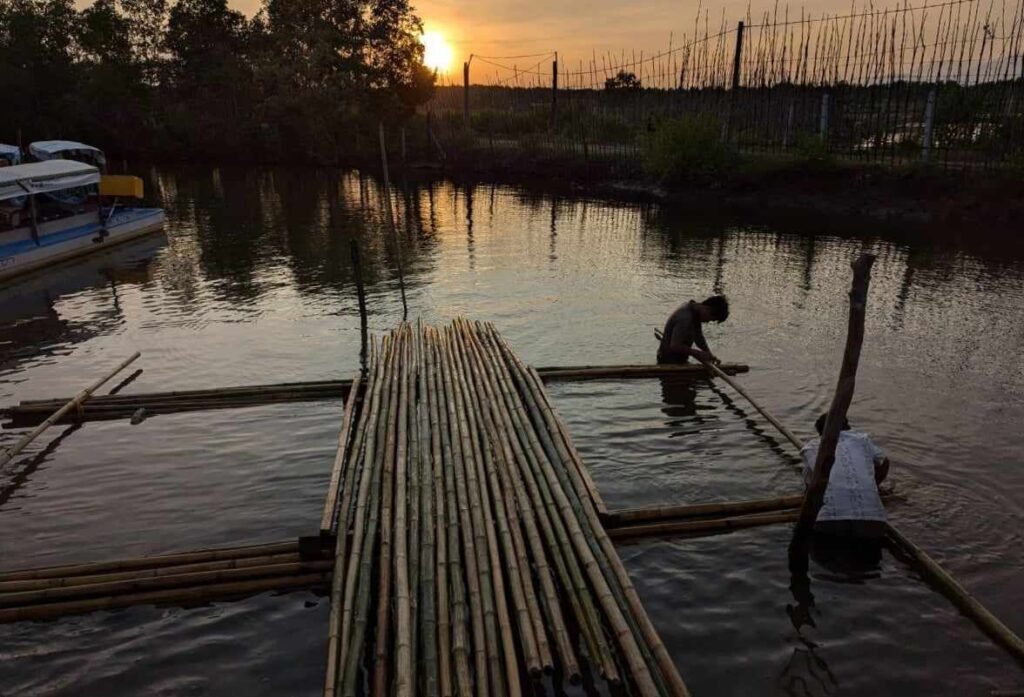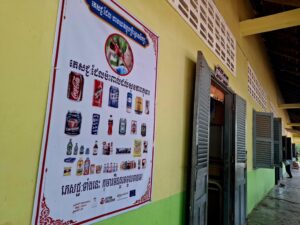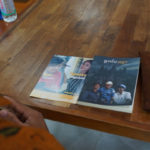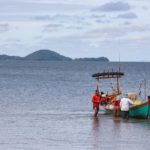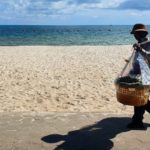In Cambodia’s coastal provinces, local communities are not only preserving the breathtaking beauty of mangrove forests, but also securing sustainable, resilient livelihoods. Among their efforts is the construction of bamboo paths winding through the forest, a powerful symbol of ecological and economic sustainability.
Eco-tourism is more than just an industry – it represents hope and resilience for local fishing communities as they confront the growing challenges of overfishing, environmental degradation, and climate change. It offers a pathway to economic independence, by attracting eco-conscious travelers, and protecting Cambodia’s natural beauty for future generations. By co-investing in this sector, the CO-SAVED project, co-led by AEA and co-funded by the EU, empowers local communities to take control of their future.
One shining example of this is in Kampong Samaki, Kampot, where the local community is working hand-in-hand with AEA to develop a mangrove planting site and eco-tourism destination. The Green Grow Park offers a space for visitors – tourists, schools, and community members – to learn about ecosystems, biodiversity conservation, and climate resilience.
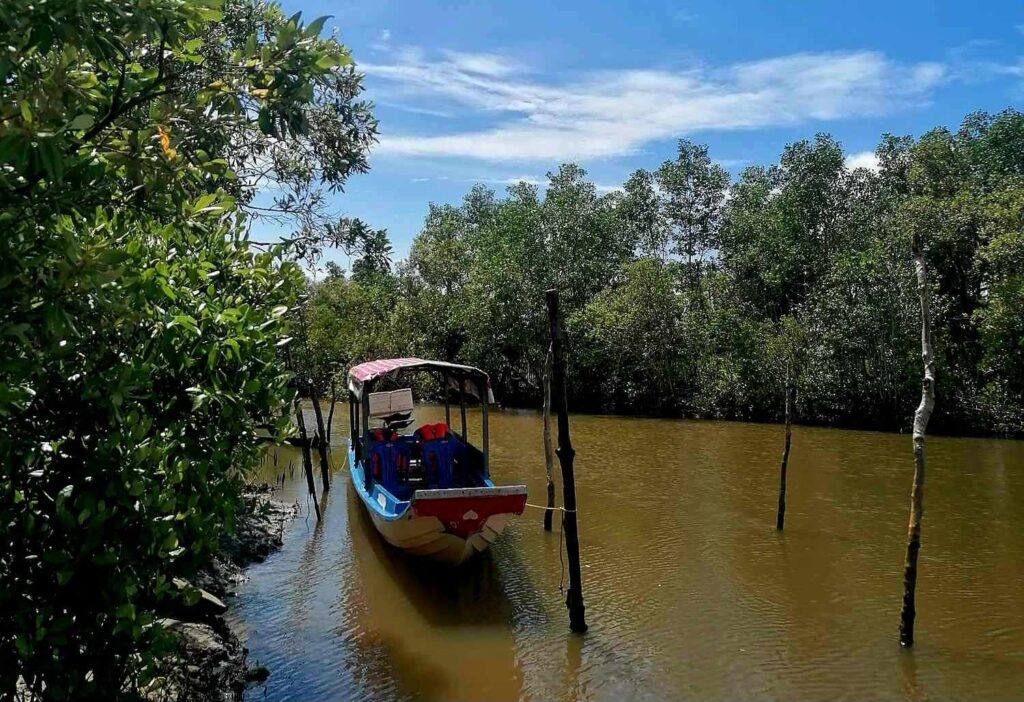
By attracting an influx of eco-tourists, it also supports local businesses, such as boat tour operators, food stalls, small shops, local guides, or Tuk-Tuk drivers. Eco-tourism growth boosts demand for services and products, creating economic opportunities in hospitality, transportation, and crafts. The CO-SAVED partnership bridges global and local communities, creating mutual benefits, beyond poverty alleviation. Responsible tourism fosters cross-cultural understanding, empowering communities to share their culture and sustainable practices with pride.
Mangroves and Bamboo: The Power of Resilience
The co-construction of a bamboo path, built by the hands of those who live closest to the land, fosters a harmonious interaction between humans and nature. This path will provide tourists with a clean and comfortable route to explore the forest while minimizing their impact on the environment. By restricting foot traffic to designated areas, the path plays a crucial role in protecting delicate ecosystems. It prevents visitors from trampling vegetation, disturbing wildlife, eroding soil, and damaging critical breeding grounds for fish, birds, and other species.
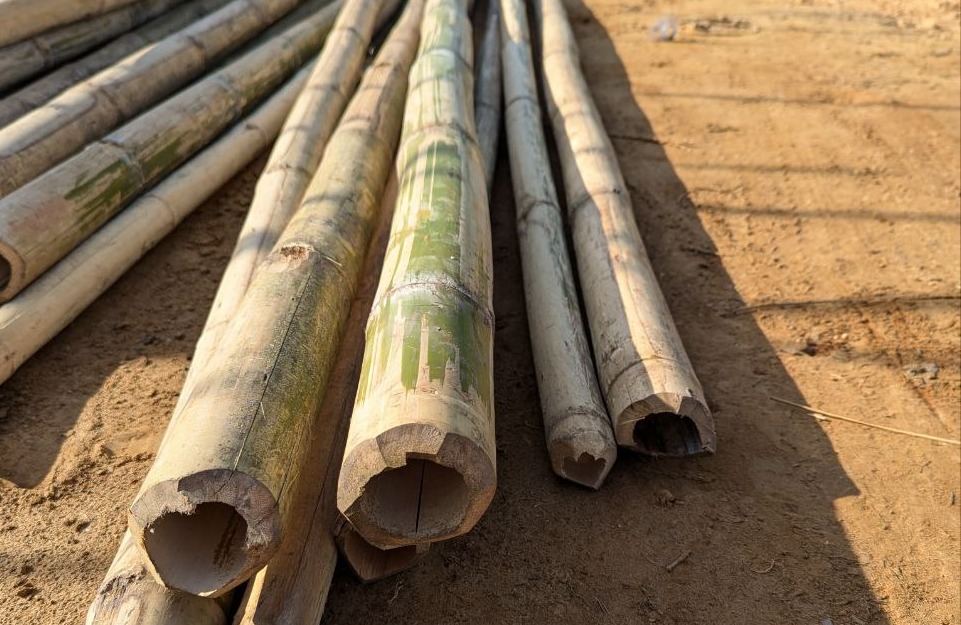
The choice of material, bamboo – a fast-growing, renewable, and biodegradable resource – is important too. It significantly reduces the ecological footprint compared to other construction materials, such as concrete, plastic, or timber. Its remarkable durability and resilience ensure that the path will require less maintenance and fewer resources over time, reducing both environmental and economic costs associated with repairs or replacements.
Finally, the bamboo path preserves the natural beauty of the surroundings. Its subtle color and texture blend seamlessly into the landscape, creating an aesthetic pathway that enhances the visitor’s experience without overshadowing the forest’s inherent beauty. In essence, this bamboo path is a sustainable and eco-friendly solution and a symbol of how human activities can coexist with nature in a balanced and respectful way.
Together with CO-SAVED partners, AEA celebrates the dedication of local communities who have embraced bamboo and mangroves. Their work is a powerful reminder that resilience, when driven by their hands and hearts, can create lasting change.
